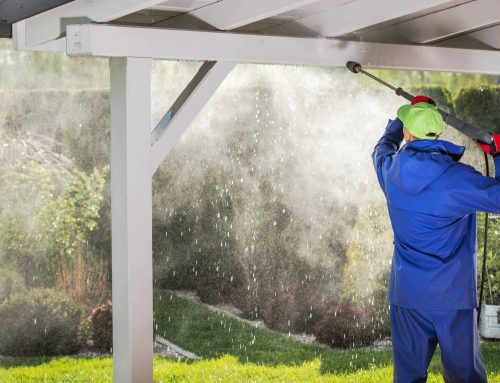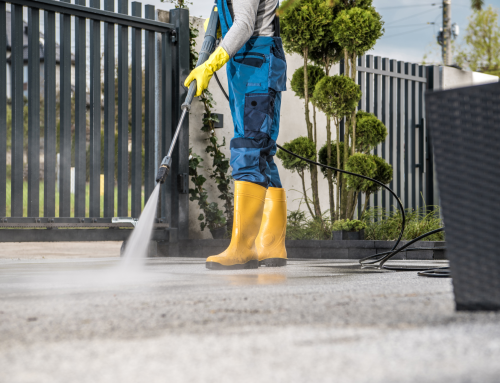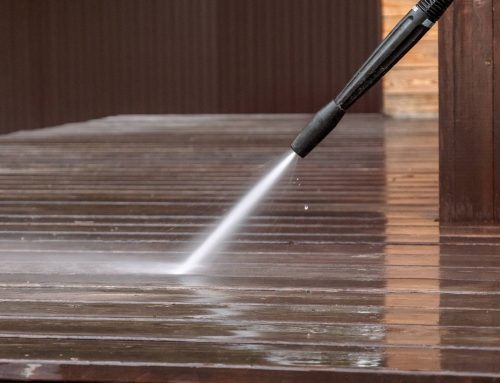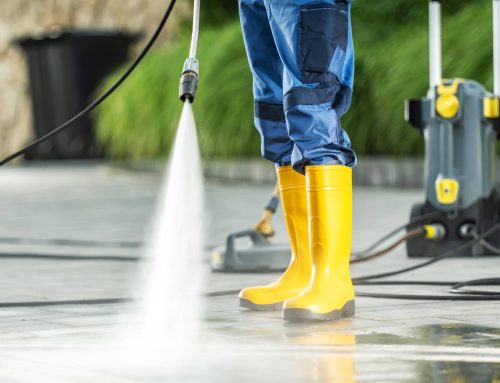Residential power washing, commonly known as pressure washing, is an essential maintenance practice that extends beyond mere aesthetic appeal for your homes. Utilizing high-pressure water spray, this method effectively removes stubborn dirt, mould, mildew, and environmental pollutants from home surfaces and structures. Not only does power washing boost a property’s curb appeal, but it also plays a pivotal role in prolonging its lifespan by preventing potential damage caused by these contaminants.
Types of Damage Caused by Contaminants
-
Mould and Mildew
- Location: Commonly found on roofs, walls, and decks.
- Damage: Causes unsightly stains and can lead to the deterioration of surfaces.
- Consequences:
- Wood: Promotes rot and decay.
- Paint: Leads to peeling and blistering.
- Metal: Can accelerate corrosion.
-
Pollutants and Dirt
- Location: Accumulates on exterior surfaces exposed to environmental elements.
- Damage: Leads to the physical erosion and gradual weakening of the building materials.
- Consequences:
- Concrete: Erosion can cause pitting and surface degradation.
- Brick: Degrades mortar and brick integrity, potentially leading to structural weaknesses.
- Siding: Can diminish the protective qualities and visual appeal.
-
Health Risks from Biological Contaminants
- Contaminants: Includes mould, pollen, and accumulated animal droppings.
- Risks:
- Respiratory Issues: Mould spores can cause allergic reactions and respiratory problems.
- Allergies: Pollen and other biological debris can trigger allergic responses.
- Diseases: Certain microbes can be pathogenic, posing further health risks.
-
Aesthetic Damage
- Impact: Contaminants can severely impair the visual appeal of a property.
- Examples:
- Staining: Surfaces can develop permanent stains if not regularly cleaned.
- Discoloration: Exposure to elements and pollutants can cause noticeable fading and discoloration.
Benefits of Regular Power Washing
-
Prevention of Costly Repairs
- Reduced Maintenance Costs: Regularly removing debris and harmful substances can prevent the need for expensive repairs and replacements.
- Prolonged Lifespan: By mitigating damage from contaminants, power washing extends the lifespan of building materials and finishes.
-
Enhanced Property Value
- Curb Appeal: Maintains and enhances the appearance of the property, making it more attractive to visitors, potential buyers, or renters.
- Resale Value: Clean and well-maintained properties tend to sell at higher prices, reflecting their preserved condition.
-
Health Benefits
- Allergen Reduction: Power washing removes allergens like pollen, mould spores, and animal dander from the property’s exterior.
- Improved Air Quality: By clearing away mould and pollutants, the air around the property becomes cleaner, reducing the risk of respiratory issues and allergies.
- Safer Environment: Minimizes the presence of potentially harmful substances that can affect the health of residents and visitors.
-
Aesthetic Maintenance
- Visual Appeal: Regular cleaning keeps surfaces looking new and free of stains, discolorations, and unsightly dirt build-up.
- Consistent Appearance: Helps maintain a uniform look across all treated surfaces, which is especially important for commercial properties seeking to project professionalism.
-
Increased Durability of Surfaces
- Protection: Removing acidic pollutants, salt, bird droppings, and other corrosive substances helps protect the integrity of the building materials.
- Surface Preparation: Power washing can also prepare surfaces for painting or refinishing, ensuring better adhesion and longevity of the new finishes.
How Power Washing Works
The process of power washing involves a high-pressure water stream capable of dislodging almost any stubborn dirt or grime. This method is exceptionally effective against tough contaminants that traditional cleaning methods cannot remove. The range of equipment used for power washing can vary from smaller, electric models to industrial-grade machines designed for extensive, heavy-duty tasks. It is crucial to choose the right pressure settings and nozzles based on the cleaning requirements and the types of surfaces being cleaned to prevent damage.
Best Practices for Power Washing
Determining how often to conduct power washing largely depends on the property’s exposure to dirt and pollutants. Urban homes might need more frequent cleaning due to higher pollution levels, whereas suburban homes might suffice with an annual or bi-annual session.
Safe power washing practices are vital to ensure no damage to the property or its surroundings. This involves the use of environmentally friendly cleaning agents and the correct adjustment of water pressure and nozzles for different materials, whether treating fragile wood or more resilient concrete.
Timing also plays a role in optimizing power washing effectiveness, with milder weather conditions preferred to avoid issues like water freezing, which can lead to damage, and ensuring thorough cleaning by avoiding high wind days.
Conclusion: Protecting Your Investment with Preventive Maintenance
Regular power washing is more than a task—it’s a critical maintenance strategy that maintains a property’s condition, enhances its value, and secures a healthy living environment. By adopting the best practices and understanding the significant benefits of residential power washing, homeowners can efficiently manage their property maintenance, ensuring their homes remain in top condition year-round. Setting up a regular cleaning schedule today could be the key to safeguarding your investment for years to come.










